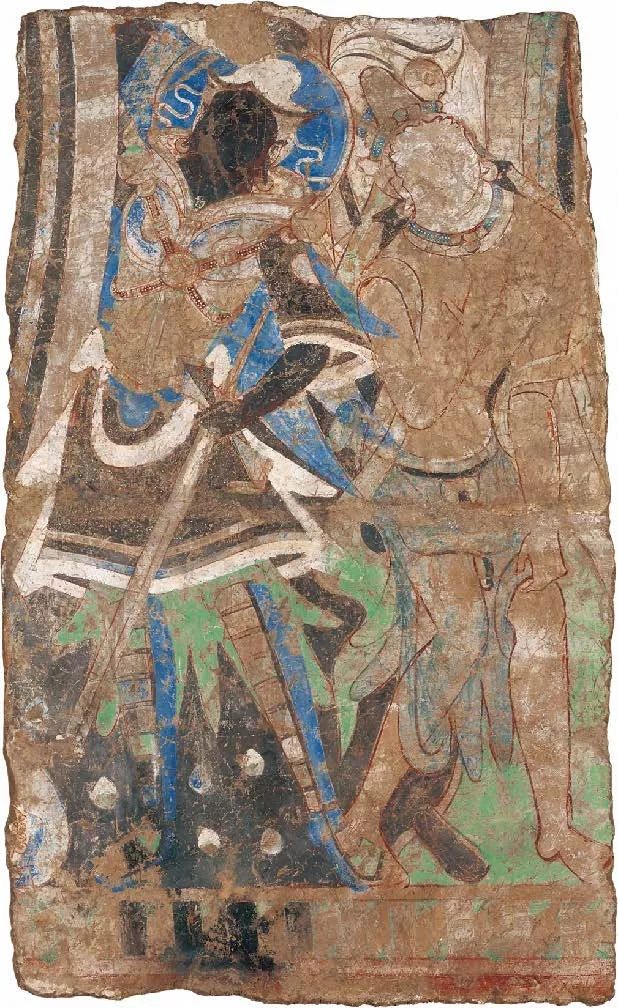Nestled along the northern Silk Road in the Xinjiang Uyghur Autonomous Region stands a beautiful testament to China’s ancient Buddhist past – the Kizil Caves. Carved into the face of the ochre-hued cliffs of the Flaming Mountains, the caves are an archaeological treasure that beckons history enthusiasts and the spiritually minded alike.
China’s oldest Buddhist complex
Far from simply communicating traders and travelers, the Silk Road was also a channel for the exchange of ideas and beliefs. For instance, Arab traders helped spread the influence of Islam along the Middle East, through the points that connected this ancient network.
Similarly, Buddhism and Buddhist art was introduced into China from India via the Silk Road in the first century CE, during the Eastern Han Dynasty. In Xinjiang, where the ancient Tocharian rulers were sympathetic to Buddhism, many temples were created for worshipers. Among them were the Kizil Caves.
These caves, sometimes known as the Qizil Thousand-Buddha Caves, are a complex of Buddhist cave temples that were created between the third and eight centuries BCE. There are 236 known cave temples (135 of which are still in good condition) carved into the cliff face, spreading from east to west – spanning 2 kilometers (1.2 miles) in length.
The caves contain a large range of architectural styles that vary across the years they were constructed. For example, some of the earlier influences were Indian and Central Asian in design, while later caves are more Chinese in their influences.
The caves include common architectural features, such as prayer halls, assembly halls, corridors, and meditation cells. All of these were typically richly decorated with frescoes, murals, and sculptures.
Although most of the sculptures are gone, the murals and frescoes are well preserved. They depict a variety of narratives, including the life of Buddha, tales from Jataka stories, and celestial beings from Buddhist cosmology.
An example of a mural from the Kizil Caves depicting a figure painted with a vibrant blue pigment.
Aside from their religious and artistic allure, the Kizil Caves are also a testament to the cultural exchanges that took place along the Silk Road. The murals also depict scenes from everyday life, including farming, hunting and riding, and even musical performances.
Generally speaking, the murals are classified into three periods. Firstly, what is referred to as “Indo-Iranian style I”, because the images show a blend of Indian and Iranian artistic influences, covers the earlier caves, which are adorned with tone-on-tone paintings using browns, oranges, and greens.
The second category, “Indo-Iranian style II”, features stronger contrasting colours, bolder line strokes and the vivid lapis-lazuli blue that came from Afghanistan. As with the first period, murals created at this time show the influence of Iran as well as those from India and other contributions from Central Asia.
Finally, the last style, the “Uyghur-Chinese style,” appears in two caves at the complex and shows distinct Chinese influences from the Tang dynasty.
Their preservation
Despite their beauty, many of the caves within the complex have been defaced over the centuries. This was done by some Muslims when they arrived in the region, as well as more recently by enthusiasts during Mao Zedong’s Cultural Revolution. In addition, German archaeologists smuggled large chunks of murals from the caves, which they took back to Berlin during the early 20th century. These human interferences have taken a toll on the appearance of this grand construction that was centuries in the making.
The caves are also in danger from the elements, as the harsh desert environment impacts their preservation. Nevertheless, scholars and conservationists are collaborating to find ways to protect them and to allow visitors a chance to see such a rich source of historical and cultural interaction.
Source Link: Kizil Caves – China’s Ancient Buddhist Legacy Is An Architectural Time Capsule
